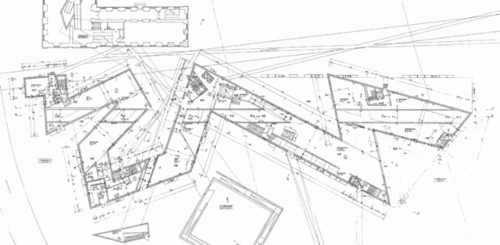Research Project A7. The Immanent Dissolution of Limits in Contemporary Art Practices and in the Experience of Art
Head
Research Associates
Dr. des. Christian Hammes / Dr. Matthias Weiß
Student Assistants
Carla Lohmann / Friederike Oberkrome
Objective
Our research project proceeds from the assumption that dissolution in contemporary art is no longer an overriding or an abolition of art – as was the case with the avant-gardes – but has itself become a constitutive principle for the production and experience of art. In this sense we speak of the paradoxical phenomenon of immanent dissolution, by which the outward reference is an integral aspect of a work of art.In the third funding period we are examining the extent to which this principle of immanent dissolution modifies contemporary art’s reference to society, in particular its critical aspirations and forms of judgement. For in as much as immanence implies one’s own involvement in the phenomena under criticism, it initially calls into question the distanced viewpoint as a precondition for criticism. Against current claims as to the impossibility or invalidity of criticism under conditions of dissolution, our research project assumes that the concept of criticism should not be abandoned, but its procedures and forms of judgement should be redefined. An examination is accordingly made of the ways through which art asserts its right to criticism and the new forms of criticism this gives rise to. We proceed from three issues that have a central significance to present-day art production and which each determine the research field of a sub-project: a) the irreducibility of mediality, b) the discourse of modernism and c) the institutional context. In these areas we look into the ways through which art tests its ability to criticise and thus establishes its relationship to society.
Subproject 1: Post-memory and fictionalisation. Aesthetic witness in contemporary art
(Prof. Dr. Klaus Krüger)
This research project proceeds from the currently occurring generational change and concomitant loss of direct witnesses which is leading to variations in the aesthetic portrayal and narration of the Holocaust. The project focuses on the change in direction towards narrativisation and fictionalisation within the ‘post-memorial’ forms of reference to the past that can be observed in numerous artistic positions dealing with memory, witness and strategies of authentication in respect of mass-media portrayal (e.g. Omer Fast), or that circumvent the representational conventions of the Holocaust and question the concepts of authenticity and the aesthetic or ethical categories of judgement associated with them (e.g. Art Spiegelman or Alan Schechner). Among other things the research concerns the extent to which the reflective potential of such artistic positions are productive in relation to the dilemma – notorious since Adorno – that any artistic depiction of the Holocaust tends towards reconciliation with or redemption from the occurrence. Against this background, and in a widening of Geoffrey Hartmann’s concept of the intellectual witness, an inquiry is undertaken into the ethical relevance of aesthetic witness that attempts to undermine its axiological secondariness by constructing mediatisation and fictionalisation as a dimension of the past itself, thus countering the both elusiveness of history and its own claim to validity with the logic of immanence.
Subproject 2: Removing and imposing media boundaries: the actions (art performances) of Joseph Beuys
(Dr. Matthias Weiß)
This subproject seeks to explore the dialectic between the attempts in performance art, starting in the 1950s, to remove boundaries and the efforts, from a similar time, to secure actions (art performances) in various media formats compatible both with the recording and presentation needs of institutions such as archives and museums and with modern mass media such as TV and radio. In order to illustrate this, the subproject will consider the work of the artist Joseph Beuys who was closely involved with radio and TV for over twenty years. The project aims to shift the organising perspective inasmuch as, unlike previous research, it seeks to extract the media value inherent in the TV and radio images themselves, no longer regarding them as the mere recording of performance but considering them the distillate of a multiplicity of performative practices and action sequences. Consequently, from the perspective of media history, a central issue is the extent to which Beuys deploys strategies of self-performance not only in actions explicitly stated to be art but also quite specifically in the course of activities in which he only ostensibly departs from the art context. In contrast, from the perspective of media theory, the subproject seeks to re-evaluate the relationship between performance and the ‘documentation’ thereof. Crucial to this analysis, moreover, is the proposition that obtaining images of the performances was essential for their return to – or, more accurately, their recapture and thus renewed subjection to boundaries in – the museum context.
